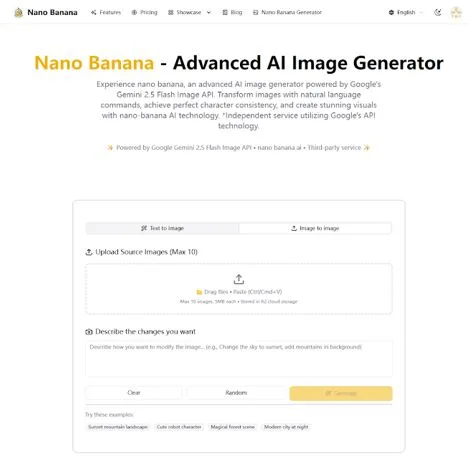Resume Writing Tips for 2025: How AI Sees What Recruiters Don’t
Finding a job today is not just about impressing the person reading your resume. More often than not, the first “reviewer” is an AI system. These tools scan approx 100s of resumes in minutes, picking out candidates who seem to match the role. What that means? Even strong applicants can be skipped if their resumes are not structured correctly.
Understanding how AI evaluates resumes can give you a real advantage. In this guide, we will go over resume writing tips 2025 that help your CV get noticed by machines and humans alike.
How AI scans at your resume
AI recruitment software doesn’t care about fancy designs, colors, or your creative flair. It’s looking for facts, patterns, and context. Job titles, skills, past experience, and achievements matter. Some systems even weigh the order of your information and the way you describe your work.
Think of AI as a first filter. If your resume does not make sense to the system, no recruiter will see it, no matter how impressive you are on paper.
Resume writing tips that pass AI scanners 2025
In 2025, AI-powered recruitment tools are key in filtering resumes. To stand out, your resume must be optimized for both ATS (Applicant Tracking Systems) and hiring managers. This section covers essential tips to ensure your resume passes AI scanners and grabs attention.
-
Keywords make the difference
Many startups and established companies rely on recruitment software for startups to match resumes with job descriptions. The key is not stuffing keywords, but including them naturally. AI looks for relevant skills in the right places.
- Mention the tools, languages, or frameworks you use.
- Use multiple ways to describe the same skill, like “Python development” and “Python programming.”
- Place keywords where they belong: skills, projects, and work experience.
Using keywords the right way helps your resume pass the AI filter without feeling forced.
-
Keep formatting simple
A lot of resumes fail because they look nice but confuse AI. Graphics, tables, and unusual layouts can hide information. Stick to a clean, readable format:
- Headings like Experience, Education, Skills
- Bullet points for achievements
- Avoid headers or footers for key content
- Save as PDF or Word, depending on what the job posting asks for
Clear formatting ensures both AI and humans can quickly see what you bring to the table.
-
Try an AI resume checker
AI resume checkers are not only for the use of the tech-savvy. The tools highlight errors in the formatting, ambiguous text, and missing keywords that may become barriers to your resume.
- Instant Feedback: AI resume checkers provide real-time analysis of your resume.
- Keyword Optimization: Helps identify relevant keywords for your target job.
- ATS Compatibility: Ensures your resume is formatted to pass through applicant tracking systems.
- Tailored Suggestions: Offers personalized tips to improve clarity, structure, and content.
- Error Detection: Highlights grammar, spelling, and formatting issues you may have missed.
Through AI-based resume analysis, you can not only improve your CV but also uncover issues that you might have overlooked.
-
Make your resume stand out for every job.
By regularly testing your resume, you ensure that it is passing automated filters and stays up-to-date with the competition.
- Get your resume to be one that catches the eye of employers for each and every vacancy.
- Very seldom a resume is effective in all cases. For each filing, adjust your resume:
- Highlight the experience and skills that are relevant to the job.
- Use natural language for the job description.
- Showcase the achievements that resonate with the company’s core values.
The perception of your suitability by AI and human recruiters can be significantly changed by even small alterations.
Display accomplishments rather than just obligation
-
Show achievements, not just duties
Listing responsibilities is not enough. AI and recruiters both look for results. Focus on what you accomplished:
- “A 20% reduction in onboarding time”
- “Oversaw a ten-person team to launch a product two weeks ahead of schedule.”
Numbers and clear outcomes make your resume stronger and easier to understand.
-
Balance AI optimization with readability
AI can help and recruiters are still in control. Believe me, your resume should remain clear, concise, and professional. Concise paragraphs, clear headings, and powerful action verbs are I had say beneficial.
- Avoid keyword stuffing: Use relevant keywords naturally, not excessively, to maintain readability.
- Clear, concise language: Prioritize easy-to-read sentences while integrating keywords seamlessly.
- Logical structure: Organize sections (experience, skills, education) clearly for both AI and human readers.
- Use bullet points: Make information scannable for both AI and hiring managers.
- Tailor content: Customize your resume to the job description while keeping it easy to read.
- Readable fonts: Choose simple, professional fonts to improve both AI and human legibility.
Well, let’s make it easy to understand for you, think of it as a document that needs to work on both computers and humans.
Remember context and soft skills.
Soft skills still matter. AI is improving at detecting leadership or teamwork, but concrete examples carry more weight:
- “Coordinated a project across three departments, cutting errors by 15%”
- “Mentored junior staff, boosting overall team performance”
I had say specific examples make you stand out, whether a human or AI is reviewing your CV.
Keep refining your resume
You have to redo your resume every time you have an update. You need to find out how your resume looks like in various job applications, adjust your keywords, rephrase, and change the layout will not only make your resume current but also make visible its competitiveness and conformity with the newest standards.
Keep an eye out for typical errors made by job seekers.
Even experienced professionals slip up. These issues often hurt more than they seem:
- Unusual job titles – “Growth Ninja” might look cool, but AI may not understand it. Use standard titles.
- Missing critical keywords – If you do not explicitly mention important skills, AI could skip you.
- Overly long sentences – Keep descriptions concise. Clear language helps AI read your resume correctly.
- Vague achievements – Specific results matter more than generic responsibilities. Include numbers or measurable outcomes when possible.
Avoiding these mistakes keeps your resume in the running.
Conclusion
Look, AI resume screening isn’t going anywhere,if you’re job hunting, you’re in the thick of it whether you like it or not. The trick? Figure out how these bots chew through your resume so you don’t get booted out for something dumb, like missing the right buzzword or burying your best wins in a wall of text.
For 2025, forget about fancy resume templates or you know those color schemes. What matters? Get straight to the point, slap some numbers next to your achievements (like “increased sales by 30%” instead of “helped sales”), and, for the love of all that is holy, make sure what you’re saying actually fits the job you want. You want the bots to flag you, but also make sure if a real person gets your resume, they don’t fall asleep halfway through.
Honestly, the best play is to treat AI as your hype man, not your enemy. Let it push you to sharpen your story. Tweak, rewrite, and make your experience highlighted for whoever’s reading, be it algorithm or actual human.
Author Bio
Krutika Khakhkhar
Krutika is an accomplished software project manager with years of experience leading complex software development projects from conception to delivery. She possesses an unique combination of technical and project management skills, which enables her to successfully manage and motivate cross-functional teams to deliver high-quality software solutions.





